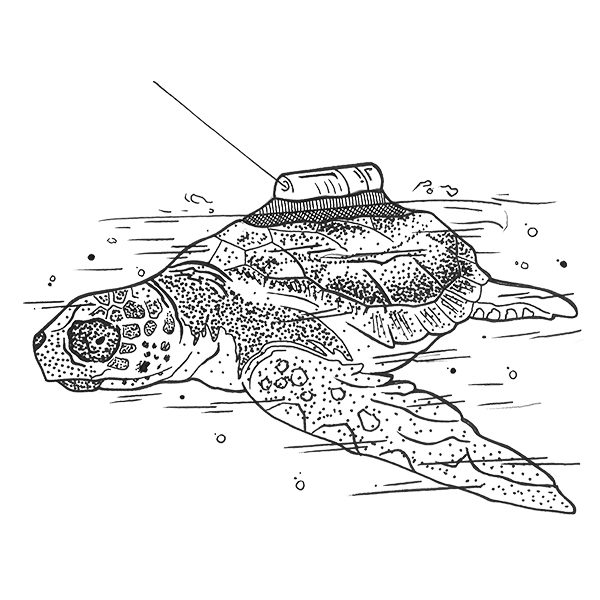The Azul Marino Foundation has financed the purchase of satellite transmitters for the subsequent monitoring of 4 specimens from a nest located on the Serradal beach in Castellón (07/13/2019). These specimens were released after 15 months from the ARCA del Mar of the Oceanogràfic Foundation (neonates 4 and 9) and in the Seville Aquarium (neonates 12 and 27).
Newly hatched sea turtles (Caretta caretta) are very vulnerable to predators, such as crabs, birds, and fish, due to their small size. It is estimated that mortality in the first days reaches 90% and that only 1 in 1000 specimens will reach adulthood. Captive breeding within head- start projects have a better chance of survival due to larger sizes reducing predation.
To evaluate the survival of the animals once released and to know their movements, we currently have an indispensable tool: satellite transmitters.
They are small devices that are fixed with putty and silicone to the shell. After a few months of growth the devices come off without causing harm to the animal. For this project, solar satellites brands of the Desert Star model Seatag-TT 21 g have been used.
When the turtle is on the surface of the water they emit a signal that can be detected by Argos satellite system. Precision of location will Depend on the number and strength of the signals received from a device.
With the marking of these specimens the following objectives are pursued:
Since the turtles were released (10/15/2020), we are constantly receiving data from all transmitters. After the first weeks, which are considered critical in the reintroduction process, all data received indicates that they have adapted well to life at sea.
The monitoring will continue while the devices are in operation and we hope to generate information on their routes and dispersal areas, thereby supporting the work being carried out by other entities within the Sea Turtle Conservation Strategy of the Valencian Community.
By contributing these emitters we are actively contributing to the conservation of the species, classified as “Vulnerable” in the Spanish Catalog of Threatened Species and included in
Annexes II (Species for which it is necessary to designate special conservation areas) and IV (Species that require strict protection) of the “Habitats Directive”.
This project is part of the collaboration agreement signed between the Azul Marino Foundation and the Oceanogràfic Foundation.

The satellite tagging of turtles allows us to expand the knowledge and information we have and apply it to the protection of a species included as “Vulnerable” in the Spanish Catalog of Threatened Species